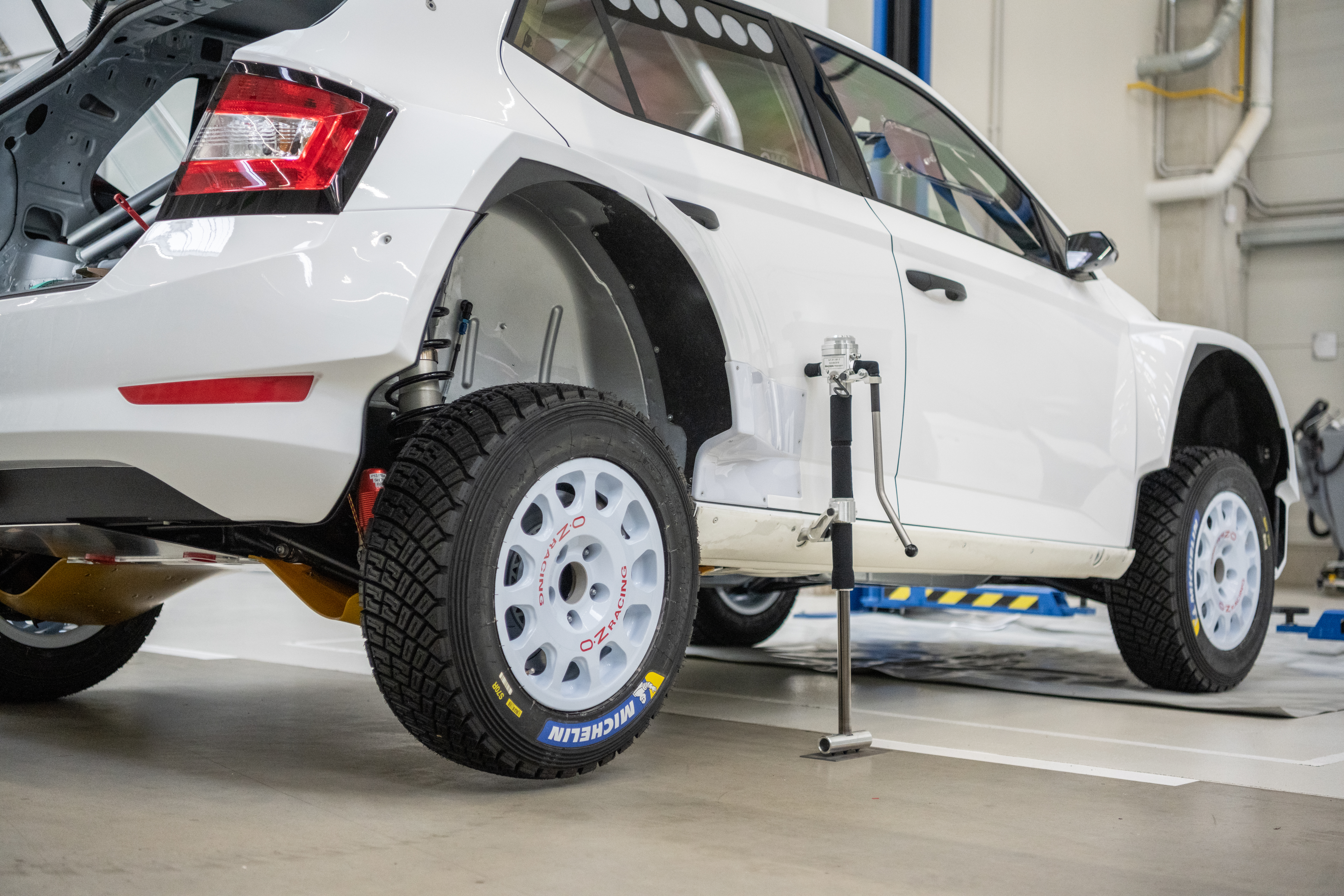Spare chassis to go
We’ve spoken about the roll cage, but we should not forget the chassis spares in the car. These are securely attached to the roll cage in the rear of the car in a way ensuring they don’t block access to the spare tyre.
There has to be at least one and at most two spare tyres in the car, according to the regulations. The number depends on the rally surface. On tarmac the crew usually takes just one spare tyre, but on gravel there is a much higher risk of puncture, so a second spare is often needed. In some cases, like when the weather is unpredictable, the crew has two different tyre compounds to choose from.
 Hydraulic jack developed by ŠKODA Motorsport team technicians
Hydraulic jack developed by ŠKODA Motorsport team technicians
Another interesting piece of kit found in the rear of the cockpit is the hydraulic jack developed by ŠKODA Motorsport technicians. It’s incredibly light, but its double action makes it possible to lift the car as quickly as possible. Unlike standard jacks, every pumping movement of the lever lifts the car, not every second movement.
There is an electric impact wrench for loosening and tightening wheel nuts – and there’s not only a spare battery for that tool, there’s a back-up manual wrench as well.































